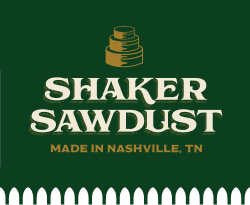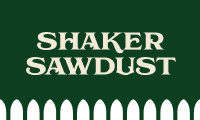
Artist Statement
I am not an artist, I am a plagiarist. This is not false modesty, it is the truth. My work is rooted in the simple and elegant aesthetic of some of the kindest people in the world, the Shakers.
In October 2002, I learned how to make Shaker boxes from a very generous and talented man, John Wilson, at Shaker Village in Pleasant Hill, Kentucky. Taking the traditional Shaker methods and techniques I learned in Kentucky home to Tennessee, building Shaker boxes quickly became my passion and my living. Over the years, I have experimented with the iconic Shaker form by incorporating a diverse array of materials into my work such as domestic and exotic woods, copper, animal hides, and electronic components. The result is a blending of modern and traditional forms that pays homage to the Shaker design aesthetic in a sometimes unconventional, but always respectful, manner.
I consider myself very fortunate. First, I found something that I love to do and second, I have a wife, two children, and a granddaughter that support me and my work.
the Shakers
In 1775, Mother Anne Lee and her followers sailed to America from England and established the first Shaker communities in North America. An offshoot of the Quakers, the United Society of Believers in Christ’s Second Coming, as they were formally known, was a Utopian society that established a network of self-sufficient, agrarian communities separate from “the world.” By the late eighteenth century, there were 19 shaker communities across New England, Ohio, and Kentucky.
Strengthened by their beliefs that work is a form of worship, the Shakers laboured to perfect their processes and environments, and gained notoriety in their day for innovations like the circular saw, flat broom, and seed packets. Originally used to store dry goods, the oval box has come to represent the modern and utilitarian aesthetic in Shaker handicrafts.





